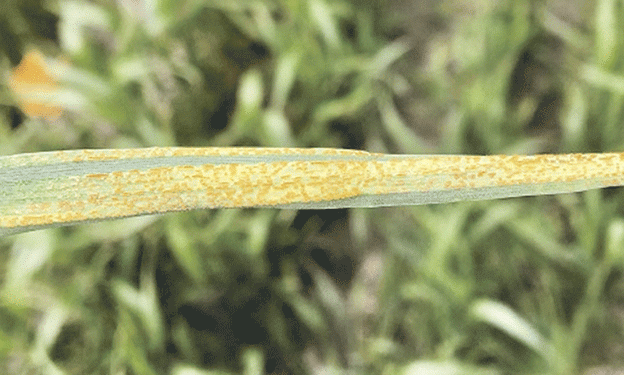In Manitoba and Saskatchewan, the spring of 2024 has been marked by variable rains and cool conditions, which have reawakened concerns about cereal leaf infections. Plant pathologists like David Kaminski from Manitoba Agriculture and Randy Kutcher from the University of Saskatchewan are reporting higher incidences of diseases like tan spot, stripe rust, and septoria, particularly in wheat and oats.
Tan Spot in Wheat: Tan spot is one of the most prevalent leaf diseases in Manitoba this year. It thrives in cool, moist conditions and often appears early in the growing season, starting in the lower leaves and sometimes progressing to the upper canopy. This disease has been a recurring issue, but this year’s conditions have exacerbated its spread.
Septoria and Crown Rust: Septoria, typically a wheat disease, has also been found in oats this year. Crown rust, a common oat leaf disease in Manitoba, is being detected more frequently due to the presence of buckthorn, an alternate host of crown rust, and wind-blown spores from the United States.
Stripe Rust: Unusually, stripe rust has been reported on some spring wheat in Manitoba, although it is typically more common in winter wheat in Alberta. This year’s cooler temperatures and an atypical wind pattern from the U.S. Pacific Northwest are likely responsible for this occurrence.
Managing Disease Pressure
Given the resurgence of these diseases, effective management is crucial. Kaminski and Kutcher emphasize the importance of using multiple modes of action when applying fungicides to prevent the development of resistance. For example, if a triazole fungicide is used during the flag leaf stage, it is advisable to switch to a different mode of action for any subsequent applications.
Integrated Disease Management: Beyond fungicides, integrated management strategies are essential. Diverse crop rotations, careful scouting, and choosing disease-resistant varieties are all effective measures. “Rotation is number one,” said Kutcher, stressing that a diverse rotation, including pulses, flax, or oats, can significantly reduce disease pressure.
Varietal Resistance: Selecting varieties with strong resistance ratings is another critical step. In Manitoba, for instance, the “Seed Manitoba” publication provides detailed resistance ratings, helping growers choose the best options for their specific conditions.
Timing of Fungicide Applications
Fungicide application timing is also crucial. In Saskatchewan, many cereal producers aim to apply fungicides during the flag leaf stage to target leaf diseases effectively. However, given the cool, wet spring, some crops have experienced delayed development, making it necessary to adjust application timing to coincide with the flowering period, which is critical for controlling both leaf diseases and fusarium head blight.
The return of cereal leaf diseases in 2024 is a reminder of the ever-present challenges faced by farmers in managing crop health. With the right combination of fungicide strategies, crop rotations, and resistant varieties, it is possible to mitigate the impact of these diseases and protect yields. As climate patterns continue to shift, staying informed and adaptable will be key to maintaining healthy cereal crops in the future.
Error




